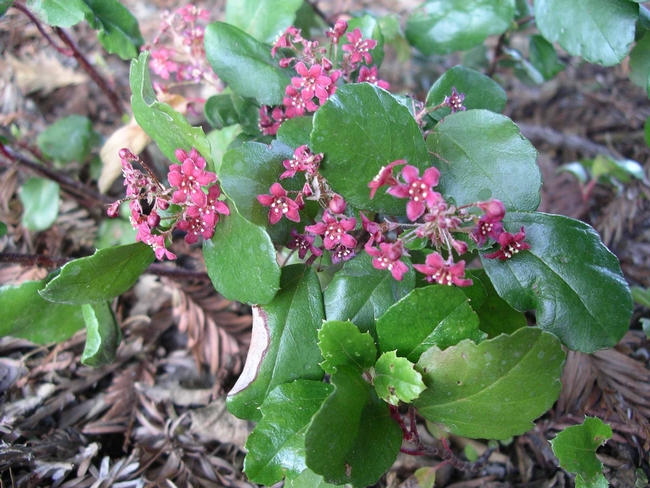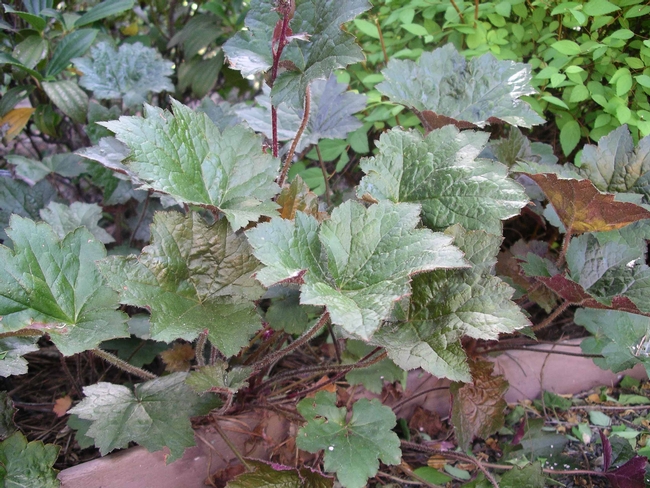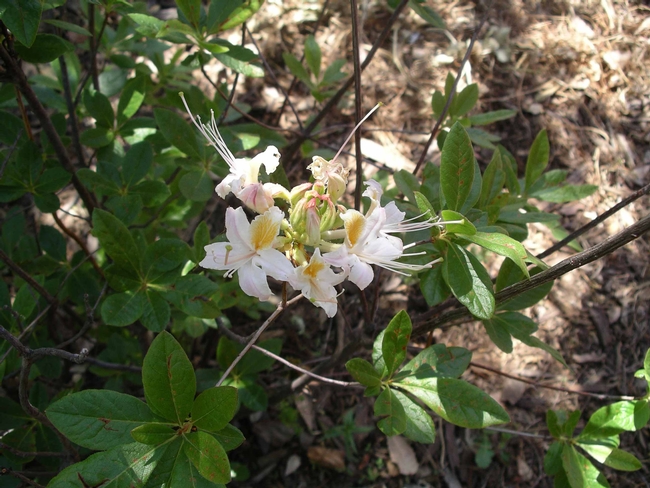By Cindy Weiner, UC Master Gardener of Butte County, June 15, 2018
Catalina perfume, Cindy Weiner
One plant suitable for dry shade is Catalina perfume or evergreen currant (scientific name Ribes viburnifolium). Native to Catalina Island and Baja California, it is a small evergreen shrub with glossy dark green leaves that have a spicy fragrance. The arching red stems reach 3 feet tall and spread about 6 feet. Pruning the stem tips will increase the density of the plant. Small rose-colored flowers appear from February to April. The fruit, a reddish-orange berry, isn't commonly seen in garden settings. While Catalina perfume needs no supplemental water once established, it can tolerate more, so it can be grown alongside plants with greater water requirements.
Heuchera 'purple palace,' Cindy Weiner
Island alum root (Heuchera maxima) is native to the Channel Islands. It grows one to three feet tall and has creamy white to pinkish flowers. Crevice alumroot (Heuchera micrantha) grows on rocky mountain outcrops from central California north to Oregon. It is smaller than island alum root and its flowers are white or pink. Many cultivars of crevice alum root are available in general nurseries. These cultivars have been selected for foliage with silvery, bronze or purple tones. Three of the cultivars are “painted lady,” “Blessingham bronze,” and “purple palace.”
Western azalea, Cindy Weiner
For more information on gardening in our area, visit the Butte County Master Gardener web page at: http://ucanr.edu/sites/bcmg/. If you have a gardening question or problem, call our Hotline at (530) 538-7201.


